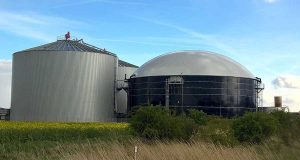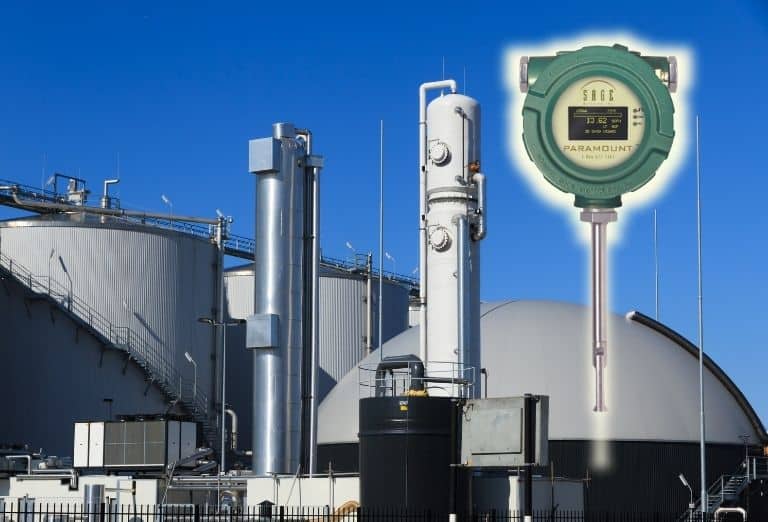Biomethane is a renewable natural gas (RNG) that is produced from biogas or decaying organic matter, such as sludge from wastewater treatment, food waste, animal manures, landfill gas, dead trees, and municipal solid waste through anaerobic digestion.
Biogas Composition

Biogas consists of methane, carbon dioxide, and trace contaminants. Depending on the application produced from the gas is 65% methane and 35% carbon dioxide.
Biogas can come from:
-
- anaerobic digesters (digester gas)
- landfill operations
- organic industrial waste treatment
Biogases are often wet and dirty and have relatively low pressures and flow rates.
Biomethane (RNG) is Similar to Fossil Natural Gas
Biomethane is upgraded biogas. The biogas is processed or “upgraded” to remove CO2 and trace elements so that the biomethane (RNG) is similar in quality to fossil natural gas. It can be distributed in the existing natural gas distribution grid when upgrading the quality. Renewable natural gas is a subcategory of synthetic natural gas or substitute natural gas (SNG).
Like conventional natural gas, RNG can also be used in the compressed natural gas system (CNG) or the liquified natural gas system (LNG) and qualifies in the Renewable Fuel Standard as an advanced biofuel.
Benefits of Renewable Natural Gas
There are benefits to RNG or biomethane:
-
- RNG (biomethane) is a sustainable natural gas that is relatively clean versus other fossil fuels.
- By using the RNG, we do not deplete fossil fuels which are limited resources.
- When producing biogas, capturing escaping greenhouse gas emissions from landfills, wastewater, manure, and other sources prevents methane, a potent GHG, from leaking into the atmosphere.
Measuring Biogas and Biomethane/RNG
Thermal mass flow meters are ideal when measuring biogas and in the upgrading process to renewable natural gas. The meter is accurate in both low flow and low pressures typical of these gases. They are excellent for digester gas flow because of their low-pressure drop and low flow sensitivity.

Challenges
-
- One challenge when measuring biogas is the potential buildup on the meter’s probe because the gas is often dirty. Sage Metering provides an easy way to remove the flow meter’s probe from the pipe without needing to remove the meter or disrupt service to clean the sensor probe if buildup occurs.
- Another challenge is that the biogas may be wet. In this situation, Sage has installation solutions that prevent condensation from hitting the sensor.
- Biogas composition changes based on the biomass source and can change over time with changing conditions in the digester tanks or landfills. Refer to our article on Biogas Correction Factors
Sage Biogas Flow Meter
To learn more, read our Biogas Application Guide, call us today, or message us now.
You may also be interested in:
- A Guide to Using a Thermal Mass Flow Meter for Biogas Measurement.
- Methane emission sources and monitoring to address climate change by Bob Steinberg of Sage Metering.

